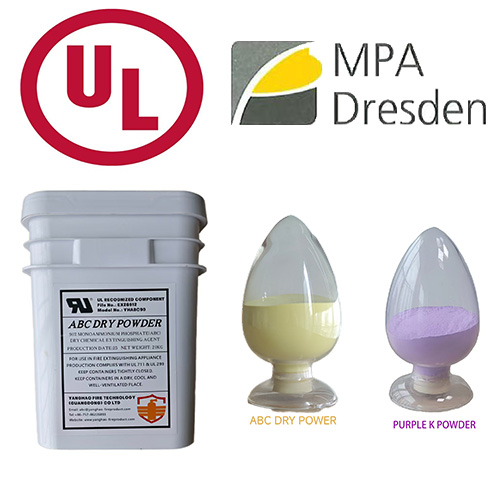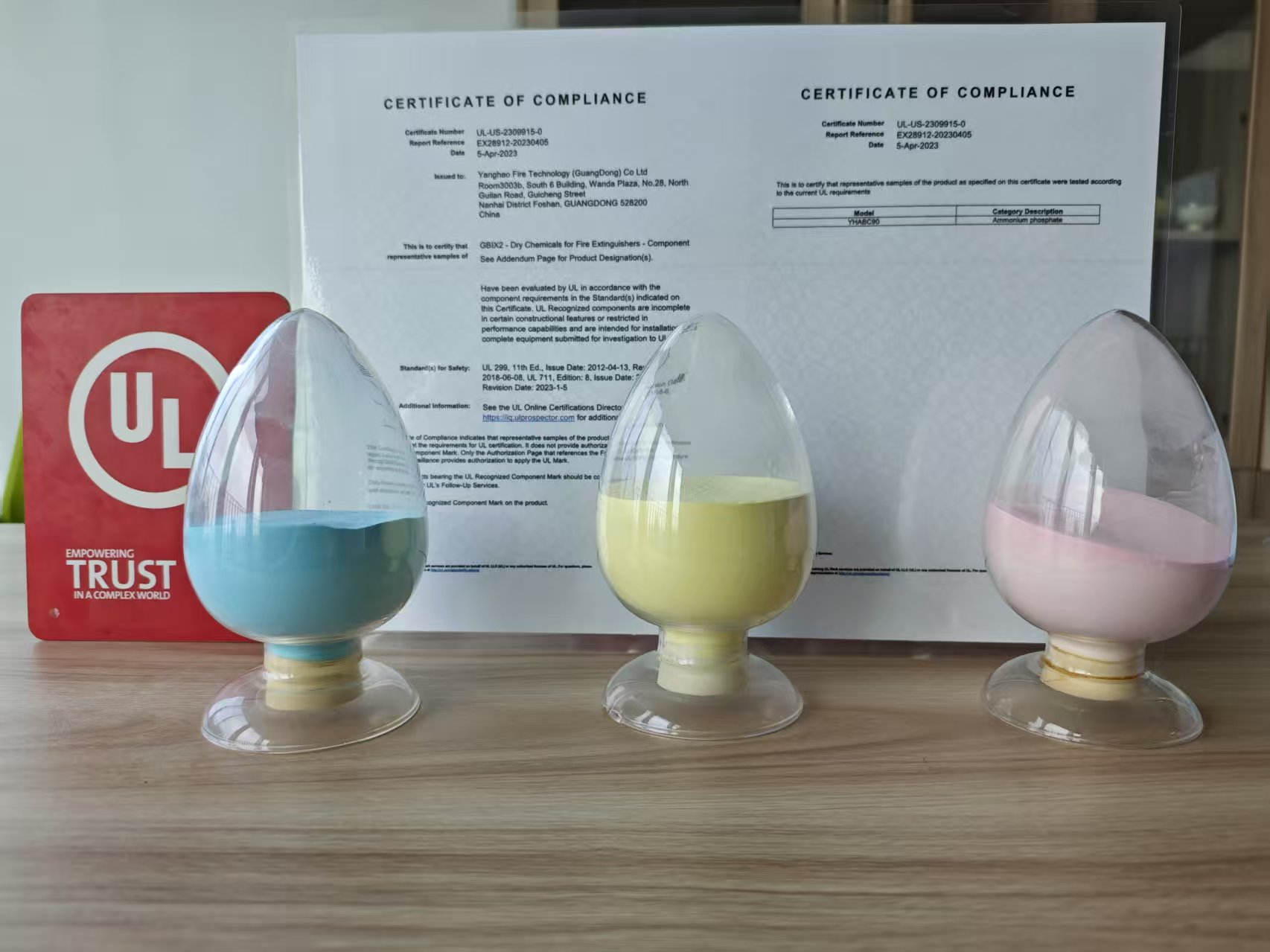How Particle Size Distribution Affects the Performance of Dry Chemical Fire Extinguishing Agents
1. Introduction
In fire protection science, the effectiveness of a dry chemical fire extinguishing agent depends on more than just its chemical composition. One of the most underestimated yet crucial factors is particle size distribution—a key metric that directly influences fire suppression efficiency. Whether the dry chemical powder is used in portable extinguishers or fixed systems, the average particle size and the uniformity of granules determine how rapidly and thoroughly a fire can be controlled.
This blog explores the link between dry chemical powder granularity and its extinguishing capabilities, focusing especially on monoammonium phosphate, the primary compound in ABC powder formulations. We’ll examine laboratory data, industry best practices, and how certified powders like YangHao’s UL-listed ABC90 stand out in real-world performance.
2. Why Particle Size Matters in Fire Suppression
Dry chemical fire extinguishing agents work by interrupting the fire triangle—removing heat, oxygen, or the fuel’s reactive chain. The moment the powder is discharged, particles must quickly envelop the flames and create a thermal and chemical barrier. This is where particle size distribution comes into play.
Finer powders (less than 10 microns) can suspend in the air longer, effectively smothering the flame but may be prone to clumping.
Larger particles (above 100 microns) fall quickly and reduce the cloud coverage, decreasing fire suppression efficiency.
Optimal ranges (20–75 microns) offer the best balance between suspension, flowability, and surface area reactivity.
Studies show that monoammonium phosphate-based ABC powder with uniform granules in this optimal range exhibits faster knockdown times and better control over re-ignition scenarios.
3. Case Study: UL-Certified ABC90 by YangHao
YangHao’s UL-certified ABC powder—especially the ABC90 formulation—is engineered with an advanced milling and classification process to achieve high consistency in dry chemical powder granularity. Compared to average market products, the ABC90 demonstrates:
Tighter particle distribution (D50 around 45μm)
Enhanced flowability during discharge
Minimal caking even in humid conditions
Superior coating efficiency on burning materials
This engineered dry chemical fire extinguishing agent is formulated with over 90% monoammonium phosphate, boosting its chemical effectiveness and working synergistically with optimized particle size to elevate fire suppression efficiency by up to 20% in Class A and B fires.
4. Laboratory Testing: Granule Size vs. Efficiency
In controlled testing environments, different batches of dry chemical powder were produced with varied average particle sizes: 30μm, 45μm, 60μm, and 90μm. Each batch was then subjected to standard Class B flame tests (ethanol and gasoline-based).
Results:
| Particle Size (μm) | Average Knockdown Time (sec) | Re-Ignition Observed | Efficiency Rating |
30 | 8.5 | Yes (mild) | Medium |
45 | 6.2 | No | High |
60 | 7.3 | Yes (mild) | Medium |
90 | 9.1 | Yes (significant) | Low |
These results validate that monoammonium phosphate particles in the 45μm range offer the best fire suppression efficiency, both in knockdown time and resistance to re-ignition. YangHao’s ABC90 formula is calibrated precisely to this granularity window.
5. Real-World Implications: Storage, Discharge, and Safety
For facility operators and fire safety engineers, understanding dry chemical powder granularity is not just academic—it influences:
Discharge time: Finer powders may clog nozzles without fluidizing agents.
Shelf life: Coarser powders resist caking but might not suspend properly.
Cleanup: Optimal size reduces residual buildup and eases post-fire restoration.
Environmental safety: Particles in the optimal size range reduce airborne inhalation risks.
By selecting certified products like YangHao’s dry chemical fire extinguishing agent, buyers ensure better flow characteristics, safer application, and enhanced fire suppression efficiency.
6. Choosing the Right ABC Powder: What Buyers Should Ask
When sourcing ABC powder, international buyers should inquire about:
Monoammonium phosphate content (%)
Particle size distribution curves or D-values (D50, D90)
Flowability tests and caking resistance
Certifications like UL, EN615, or ISO
YangHao’s ABC90 meets UL299 and UL711 standards and undergoes rigorous size control during production. Each shipment includes lab reports verifying both chemical composition and granule size—helping importers maintain quality assurance and compliance with regional safety regulations.
7. Conclusion
The relationship between dry chemical powder particle size and fire suppression efficiency is scientifically validated and commercially significant. By investing in certified agents with controlled granule sizes—like YangHao’s UL-certified ABC powder—buyers and fire safety professionals can ensure maximum extinguishing power with minimal risk.
Choosing an effective dry chemical fire extinguishing agent is no longer just about price or packaging. It’s about understanding the science behind the powder—particularly its particle size—and selecting products with proven performance metrics.




